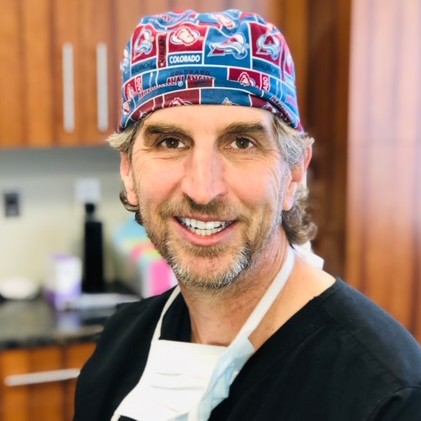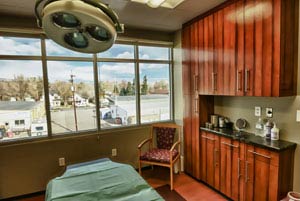Gynecomastia surgery, a transformative procedure designed to address excess breast tissue in men, often brings up questions about the potential for scarring. While the results can significantly improve confidence and quality of life, concerns about post-surgical marks are natural. What’s often overlooked is the nuanced relationship between surgical techniques, individual healing factors, and scar visibility. Scars are a natural byproduct of any surgery, but with advanced methods and proper care, they can be minimized to the point of being nearly imperceptible. This article delves into the realities of scarring after gynecomastia surgery, dispelling myths and offering insights into how patients can achieve optimal healing and results.
What Causes Scars After Gynecomastia Surgery?
Scarring is an inherent part of any surgical procedure, including gynecomastia surgery. During the procedure, incisions are made to remove excess glandular tissue, fat, and sometimes skin, depending on the severity of the condition. These incisions, while necessary to achieve optimal results, trigger the body’s natural healing process, resulting in scar formation. The location and extent of scarring depend on the surgical technique used, the individual’s skin type, and how the body responds to healing.
Types of Scars From Gynecomastia Surgery
- Peri-Areolar Scars: These are the most common and occur along the edge of the areola. This placement makes them less noticeable as they blend with the natural pigment change between the areola and the surrounding skin.
- Horizontal Scars Under the Chest: In cases requiring the removal of significant skin, scars may appear horizontally below the chest area. Surgeons typically place these in less conspicuous locations.
- Minimal Incision Scars: For procedures primarily involving liposuction, tiny incisions are made for cannula insertion, leaving minimal scarring that fades over time.
- Hypertrophic or Keloid Scars: Rare in gynecomastia surgery, these occur in individuals prone to excessive scar tissue formation and may require additional treatment to minimize their appearance.
Understanding the nature of these scars helps patients set realistic expectations while exploring options to minimize their visibility.
Do All Gynecomastia Surgeries Leave Scars?
Scarring is a natural part of any surgical procedure, but the extent and visibility of scars after gynecomastia surgery can vary significantly. While all surgeries involve incisions, modern techniques and individualized surgical plans aim to minimize scarring as much as possible. Many factors determine the degree of scarring, including the patient’s skin type, the extent of tissue removal, and the surgeon’s expertise. For some patients, minimally invasive options can reduce or even eliminate visible scars.
Key factors influencing scarring include:
- Surgical Technique: Advanced techniques, such as liposuction-only approaches, involve smaller incisions, which result in less noticeable scars. For cases requiring tissue excision, incisions are strategically placed to reduce visibility.
- Patient’s Skin Type: Genetics play a role in how the skin heals. Some individuals are more prone to developing prominent scars, like keloids, while others may heal with minimal marks.
- Extent of Tissue Removal: Larger amounts of tissue or skin removal may require more extensive incisions, leading to more noticeable scars.
- Post-Surgical Care: Proper scar management, including the use of silicone sheets, moisturizers, and sun protection, can significantly improve scar appearance over time.
- Surgeon’s Expertise: A skilled surgeon can ensure precise incisions and optimal suturing techniques, reducing the likelihood of visible scarring.
Understanding these factors can help patients feel confident about their surgical outcomes while preparing for a manageable healing process.
How to Minimize Scars After Gynecomastia Surgery
Minimizing scars after gynecomastia surgery requires a combination of advanced surgical techniques and diligent post-operative care. While scars are a natural part of the healing process, there are several ways patients can take control of their recovery to achieve the best possible aesthetic outcome. By being proactive and following expert recommendations, scars can often become barely noticeable over time.
Proper wound care is essential, including keeping the surgical area clean, avoiding picking at scabs, and applying any prescribed ointments or dressings. Silicone sheets or gels are widely recognized for their ability to flatten scars and improve their appearance over time.
Wearing a compression garment not only helps reduce swelling but also supports the skin as it heals, which can prevent the formation of excessive scar tissue. Avoiding direct sunlight on the incision area is equally important, as UV exposure can darken scars and make them more prominent.
Additionally, certain lifestyle factors, such as maintaining a healthy diet rich in vitamins and staying hydrated, can support optimal healing. Regular follow-ups with your surgeon ensure that any early signs of problematic scarring, such as hypertrophic or keloid scars, are addressed promptly with treatments like steroid injections or laser therapy. Through these measures, patients can confidently navigate their recovery with minimized visible scarring.
Managing Long-Term Scarring From Gynecomastia Surgery
Long-term scar management after gynecomastia surgery requires attention to persistent scars and proactive care to improve their appearance. For scars that remain raised or thickened, such as hypertrophic or keloid scars, treatments like steroid injections can be highly effective in flattening and softening the tissue. Laser therapy is another option, helping to reduce discoloration and improve overall scar texture. Addressing these issues early ensures that scars don’t become more pronounced over time.
For ongoing management, silicone sheets or gels are an essential part of the process. When used consistently, these treatments can diminish the visibility of scars by promoting collagen balance and softening the tissue. Advanced treatments such as microneedling or chemical peels may also be considered to stimulate skin regeneration and even out pigmentation.
Protecting scars from sun exposure remains a long-term priority. UV rays can cause scars to darken permanently, so using sunscreen or covering the area is critical. While scars may never completely disappear, they often fade significantly over time, becoming almost undetectable. With a combination of advanced treatments, consistent care, and realistic expectations, patients can achieve a smooth and confident outcome from their surgery.
Conclusion
Scarring is a natural part of gynecomastia surgery, but with modern techniques and diligent care, scars can be minimized and managed effectively. Understanding the factors that influence scarring and following post-operative recommendations are key to achieving the best possible results. At Boulder Valley Plastic Surgery, Dr. Jeffrey Swail and his team are dedicated to providing advanced surgical solutions that prioritize patient satisfaction and long-term confidence. If you’re considering gynecomastia surgery or want to learn more about scar management, visit us or call (303) 449-6666 to schedule an appointment today. Take the first step toward feeling your best!



